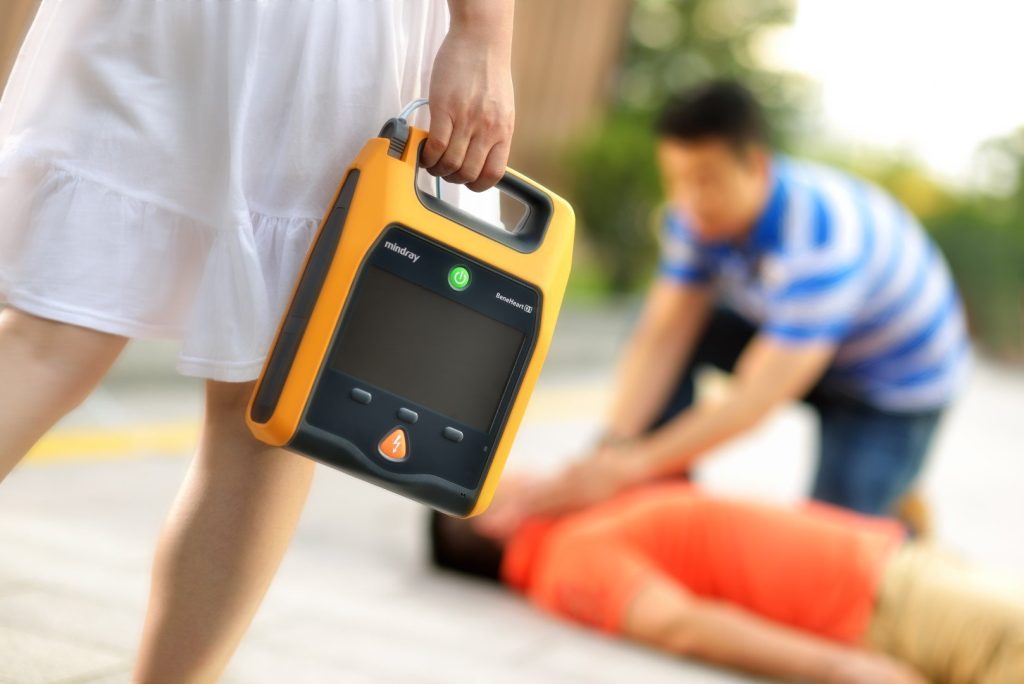When cardiac arrest strikes, seconds count. For healthcare professionals and community responders alike, mastering Automated External Defibrillator (AED) use within Basic Life Support (BLS) protocols can mean the difference between life and death. This guide explores the critical role AEDs play in modern resuscitation efforts and provides practical insights for effective implementation.
The Critical Role of AEDs in Modern Resuscitation
Sudden cardiac arrest remains one of the leading causes of death worldwide, claiming hundreds of thousands of lives annually. When the heart enters ventricular fibrillation or pulseless ventricular tachycardia, the most effective treatment is immediate defibrillation. AEDs bring this life-saving technology to the hands of both trained professionals and community responders.
Research consistently demonstrates that early defibrillation dramatically increases survival rates. For every minute that passes without defibrillation, the chance of survival decreases by 7-10%. However, when an AED is applied within the first 3-5 minutes of collapse, survival rates can reach 50-70% – a remarkable improvement over the dismal 5-10% survival rate when defibrillation is delayed.
Mastering AED use in BLS requires understanding not just the technical operation of these devices, but also their integration into the Chain of Survival – the series of actions that provide the best chance of survival following cardiac arrest.
Understanding AED Technology and Function
Modern AEDs are marvels of medical technology. These portable, user-friendly devices analyze heart rhythms automatically and deliver electrical shocks when necessary to restore normal cardiac function. The sophistication behind their simple exterior is what makes them both powerful and accessible.
AEDs work by delivering a controlled electrical shock to the heart, momentarily stopping all electrical activity. This gives the heart’s natural pacemaker a chance to reestablish a normal rhythm. The key components of an AED include:
- Electrode pads that adhere to the patient’s chest
- A battery-powered control unit that analyzes heart rhythms
- A processor that determines whether defibrillation is necessary
- Capacitors that store and deliver the electrical charge
- Voice and/or visual prompts that guide users through the process
Most modern AEDs are fully automated, requiring minimal technical knowledge to operate effectively. This design philosophy stems from the recognition that in emergency situations, simplicity saves lives.
Mastering AED Use in BLS: Step-by-Step Protocol
The integration of AED use into BLS protocols follows a clear, systematic approach designed to maximize effectiveness while minimizing interruptions in chest compressions. Here’s how to master the process:
1. Ensure Scene Safety
Before approaching the patient, scan the environment for potential hazards. Water, metal surfaces, and flammable materials can all pose risks during defibrillation. Ensure the patient is moved to a dry, non-conductive surface if necessary.
2. Confirm Unresponsiveness and Activate Emergency Response
Tap the patient’s shoulders and shout to check for responsiveness. If unresponsive, immediately call for emergency medical services or activate your facility’s emergency response system. If others are present, delegate someone to retrieve the AED while you begin CPR.
3. Begin High-Quality CPR
Immediately start chest compressions at a rate of 100-120 compressions per minute, allowing for complete chest recoil between compressions. Minimize interruptions to maintain blood flow to vital organs.
4. Deploy the AED Rapidly
Once the AED arrives, position it near the patient’s head for easy access. Power on the device following the manufacturer’s instructions – typically by pressing a marked power button.
5. Attach the Electrode Pads Correctly
Expose the patient’s chest and ensure it’s dry. Place the electrode pads in the positions indicated on the pad illustrations:
- One pad on the upper right chest, below the collarbone
- One pad on the lower left ribcage, to the left of the sternum
Ensure the pads adhere firmly to the skin. For patients with excessive chest hair, you may need to quickly shave the areas where pads will be placed (many AED kits include a razor for this purpose).
6. Allow the AED to Analyze
Once the pads are connected, the AED will prompt you to “stand clear” of the patient. Ensure no one is touching the patient during analysis to prevent interference with the heart rhythm assessment.
7. Deliver Shock If Advised
If the AED determines a shockable rhythm is present, it will charge automatically and prompt you to deliver a shock. Before pressing the shock button, visually verify that everyone is clear of the patient and loudly announce “Clear!”
8. Resume CPR Immediately
Immediately after shock delivery, resume CPR starting with chest compressions. Most current protocols recommend two minutes of CPR before the next rhythm analysis by the AED.
9. Follow the AED Prompts
Modern AEDs will guide you through the entire process with voice and/or visual prompts. Always follow these instructions, as they are designed to align with current resuscitation guidelines.
Common Challenges in Mastering AED Use in BLS
Even with their user-friendly design, several challenges can arise when using AEDs in emergencies. Anticipating and preparing for these challenges is part of mastering AED use in BLS:
Special Patient Considerations
Pediatric Patients: When treating children under 8 years old or weighing less than 55 pounds, pediatric pads or a pediatric key/switch should be used if available. These modify the energy delivered during defibrillation to a level appropriate for smaller bodies.
Patients with Implanted Devices: For patients with pacemakers or implantable cardioverter-defibrillators (visible as small bumps under the skin, usually near the collarbone), position the AED pad at least one inch away from the device.
Transdermal Medication Patches: Remove any medication patches on the chest and wipe the area clean before applying AED pads to prevent electrical arcing.
Environmental Challenges
Wet Environments: If the patient is wet, quickly dry the chest before applying electrode pads. Never use an AED in standing water.
Excessive Chest Hair: Dense chest hair can prevent proper pad adhesion. Use the razor included in many AED kits to quickly shave the areas where pads will be placed.
Metal Surfaces: Avoid placing the patient directly on metal surfaces during defibrillation if possible. If unavoidable, ensure no one is in contact with the patient or the surface during shock delivery.
AED Maintenance and Readiness
Mastering AED use in BLS extends beyond the emergency scenario to include proper device maintenance and readiness. An AED that fails when needed negates all other preparation.
Most AEDs perform automatic self-checks and indicate readiness status with a visible indicator light or display. However, regular manual checks should include:
- Battery status verification
- Confirmation that pads are within their expiration date
- Checking that all necessary accessories (razor, scissors, gloves) are present
- Ensuring the device is clean and undamaged
- Verification that the AED is stored in an accessible, visible location
Many organizations designate an AED coordinator responsible for maintaining device readiness. This person maintains logs of checks and ensures all potential users receive proper training.
Integration with Team Dynamics
In healthcare settings, mastering AED use in BLS often involves coordinating with a resuscitation team. Clear communication and role definition become essential for seamless AED integration:
- The team leader should designate who will operate the AED
- The AED operator should announce their actions (“Analyzing rhythm,” “Shock advised,” “Clear for shock”)
- Compressions should continue until immediately before analysis and resume immediately after shock delivery
- Team members should rotate compression duties every 2 minutes to prevent fatigue and maintain quality
This choreographed approach ensures minimal interruptions to chest compressions while allowing for effective defibrillation when needed.
Psychological Aspects of AED Use
The psychological components of AED use are often overlooked but critically important. First-time users frequently experience anxiety or hesitation that can delay a proper response. Understanding that modern AEDs are designed to prevent improper use can provide reassurance.
Training should address not only the technical aspects but also the emotional components of emergency response. Simulation-based practice that recreates the stress of real situations can help responders overcome hesitation when it matters most.
Continuous Education and Practice
Mastering AED use in BLS requires regular refresher training. Skills degrade over time, and guidelines evolve based on new research findings. The American Heart Association recommends skills review at least every two years, though more frequent practice is beneficial.
Techniques for maintaining proficiency include:
- Regular drills in realistic settings
- Scenario-based team training
- Use of feedback devices during practice
- Review of actual resuscitation attempts when possible
- Staying current with guideline updates
Conclusion: The Path to Mastery
Mastering AED use in BLS represents a commitment to excellence in resuscitation care. By understanding the technology, practicing the protocols, and preparing for challenges, responders can maximize the life-saving potential of these remarkable devices.
Remember that AEDs serve as the crucial link between immediate CPR and advanced medical care. When integrated properly into the Chain of Survival, they dramatically improve outcomes for cardiac arrest victims.
Take Action Today
Don’t wait until an emergency occurs to develop these critical skills. CPR Columbus offers comprehensive BLS certification Columbus programs that include hands-on AED training with expert instructors. Our American Heart Association certified courses provide the practice and confidence you need to respond effectively in crisis situations.
Whether you’re seeking initial CPR certification in Columbus or need a renewal of your BLS certification in Columbus, our stress-free, hands-on classes will ensure you’re prepared for real-world emergencies. Contact Best CPR in Columbus today to schedule your training and take the first step toward mastering this life-saving skill.





